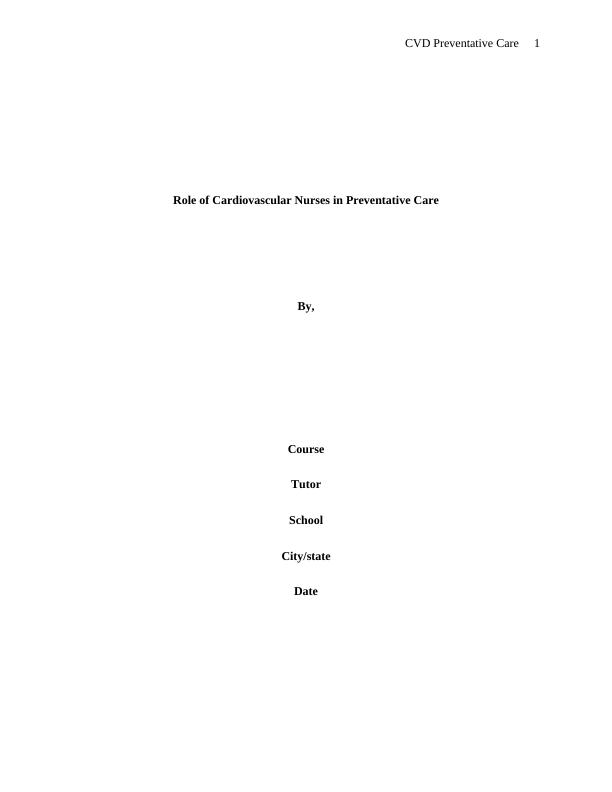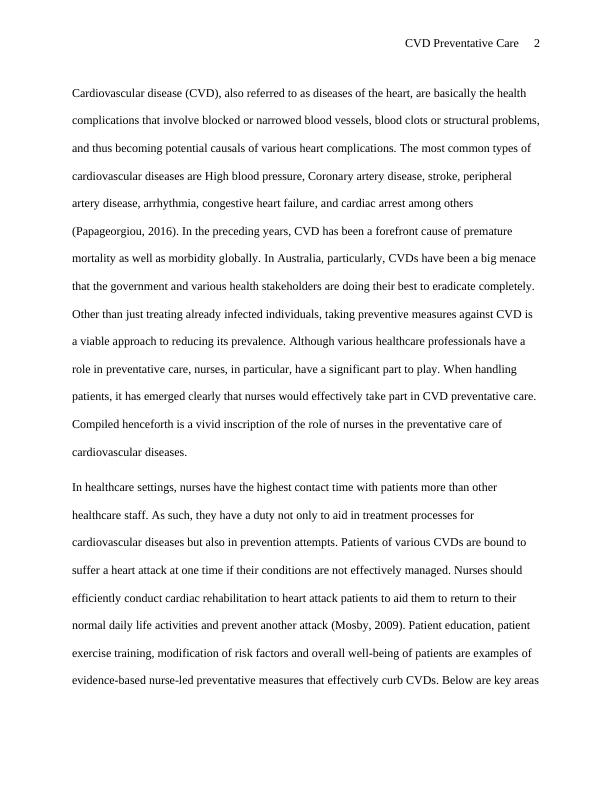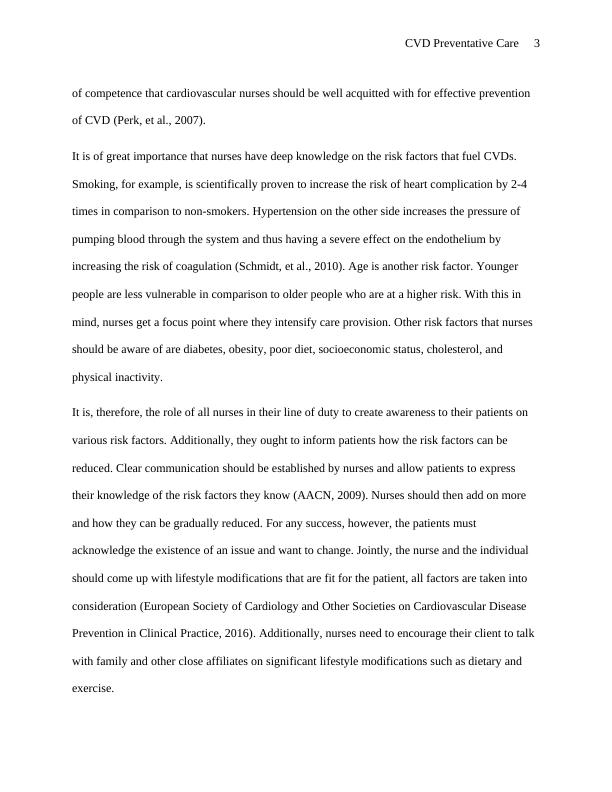Role of Cardiovascular Nurses in Preventative Care
This assignment is a literature review on the European Guidelines on cardiovascular disease prevention in clinical practice.
9 Pages2112 Words190 Views
Added on 2023-04-06
About This Document
This article discusses the role of cardiovascular nurses in preventative care for cardiovascular diseases. It highlights the importance of nurses in educating patients, facilitating behavioral change, and providing guidance on nutrition. Nurses play a crucial role in reducing the prevalence of cardiovascular diseases through their knowledge and interventions.
Role of Cardiovascular Nurses in Preventative Care
This assignment is a literature review on the European Guidelines on cardiovascular disease prevention in clinical practice.
Added on 2023-04-06
ShareRelated Documents
End of preview
Want to access all the pages? Upload your documents or become a member.
Role of Cardiovascular Nurses in Preventative Care
|8
|2302
|322
Health of Adult Assessment 2022
|13
|3315
|28
Health Determinants Effect on Cardiac Disease Essay
|10
|3289
|108
Role of Primary Healthcare Nurse in India and Australia in combatting CVD
|6
|1608
|1
Cardiovascular Disorders: Prevention, Treatment, and Risk Factors
|1
|500
|64
Impact of Cardiovascular Diseases on Nursing Practice
|14
|3277
|332



